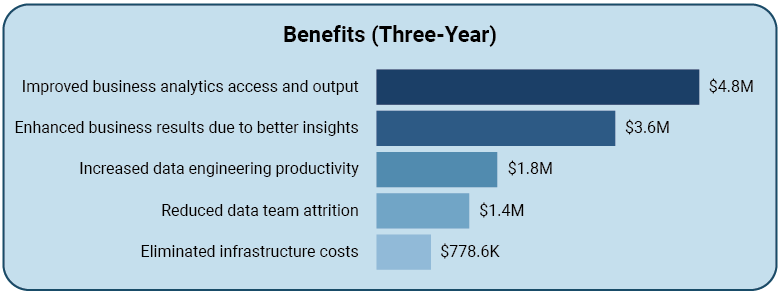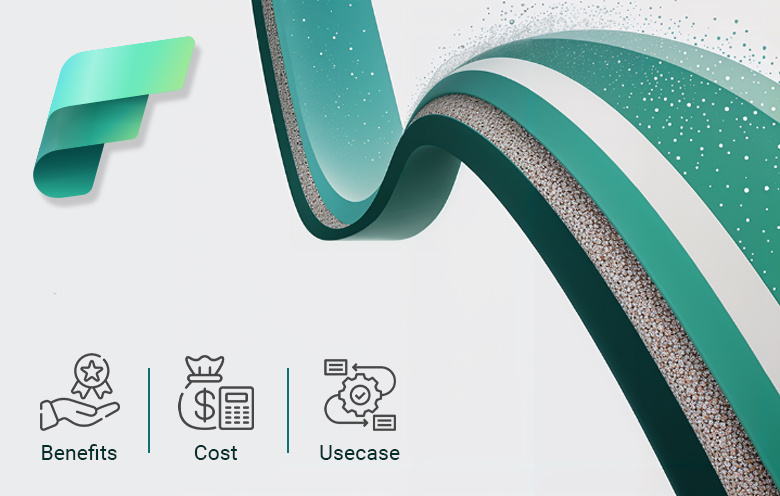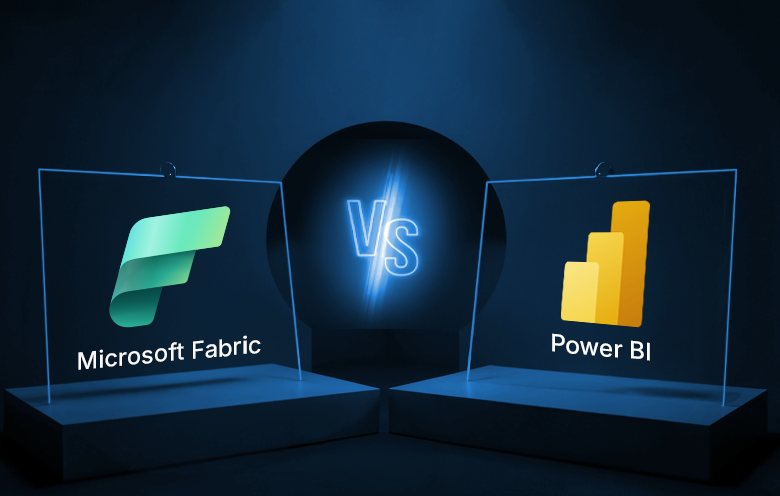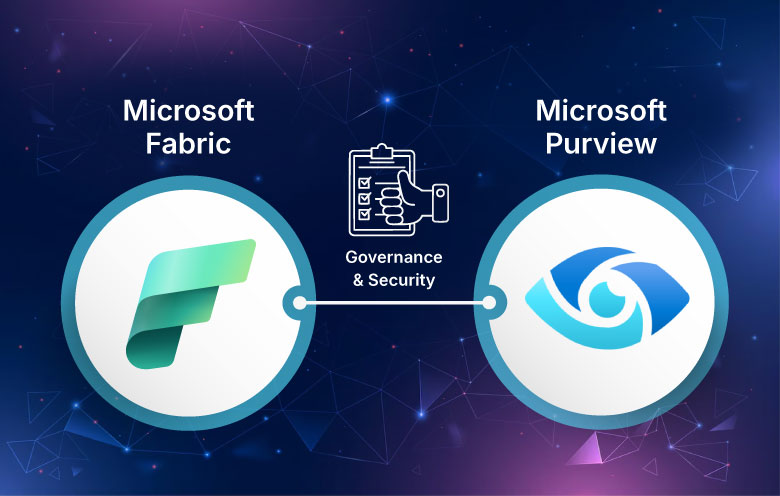Data is a critical asset for any modern business. However, majority of companies struggle to fully capitalize on its potential. Siloed systems, fragmented analytics, and complicated data governance processes cause missed opportunities and inefficiencies.
A study by Forrester Research found that up to 73% of all data within an enterprise goes unused for analytics.
Organizations face the following challenges due to the inability to integrate and analyze data:
- Slower response times
- Operational inefficiency
- Growing data volume
- High infrastructure costs
- Strategic setbacks
The gap between data collection and actionable insights grows due to these issues. Hence, the competitive landscape becomes increasingly difficult to navigate for companies that are unable to adapt.Automated data pipeline
This is where Microsoft Fabric comes into play. The tool provides the ability to address complex data challenges. It offers a wide range of benefits with its features like data collection, processing, real-time data analytics, and business intelligence.

What is Microsoft Fabric?
Microsoft Fabric is a platform that serves as a centralized hub for all your data needs. You can store your data and process it. Moreover, with built-in integration with Power BI and other Azure tools, it helps you analyze and visualize your data. It offers the following features:
- Integration with Azure Data Factory, Azure Data Lake Storage, Azure Synapse Analytics, and Power BI.
- Lakehouse support to query and analyze your data.
- Automated data pipeline with Data Factory.
- Build and manage data warehouse for structured data analytics.
- End-to-end analytics to store, process, and analyze raw data into actionable intelligence.
- Apache Spark integration enables complex data transformations and analytics on huge datasets.
- Integration of Power BI with Fabric for interactive dashboards and reports.

Benefits of Microsoft Fabric
Scalability
Fabric is built on Microsoft Azure. This means, both storage and compute needs can be scaled dynamically. Fabric can be used by businesses that are just getting started with a small dataset as well as companies with petabytes of data. It automatically scales to match the resource requirements without manual intervention.
- Support for growth: Fabric’s cloud infrastructure scales to meet increasing data volumes and processing needs. This ensures that you can grow without worrying about infrastructure limits.
- No hardware constraints: Physical storage or hardware are costly and hard to scale. Fabric eliminates the need to maintain any hardware.
- Business continuity: The tool ensures that systems remain operational even during peak loads or unexpected demand surges.
Cost efficiency
Microsoft Fabric offers cloud-based storage and compute services. This eliminates the upfront investment in hardware and software. The pay-as-you-go model of Fabric is based on actual usage to make it cost effective for businesses of all sizes.
The increased productivity offered by Microsoft Fabric saves the company $4.8 million. – Microsoft commissioned Forrester Consulting Total Economic Impact Study
- Reduced CapEx: Minimize upfront costs by shifting expenses from capital to operational. Scale resources based on demand and avoid over-provisioning.
- Flexible budget: Predict and manage your data expenses with the pay-per-use model without worrying about underutilized resources.
- Reduced maintenance cost: Fabric helps toreduce the time spent on maintenance and upgrades on on-premises infrastructure. This enables you to focus on critical tasks and innovation.
Faster time-to-insights
Better-informed decisions can help to streamline processes as these decisions are based on facts and insights rather than intuitions. Gain faster insights, generate real-time business strategies, reduce inefficiencies, and predict business outcomes with Microsoft Fabric.
- Reduced data complexity: Eliminate siloed systems to simplify your data management process. Reduce overhead of IT team, and easily access and manage data in your organization.
- Automated data pipelines: Automate data storage and transformation processes with Azure Data Factory.
- Advanced analytics: Derive actionable insights faster with Fabric’s built-in analytics tools and services.
Optimized team collaboration
Fabric enables data engineers, data scientists, business analysts, and other professionals to collaborate effectively. They can simultaneously work on shared datasheets. This improves cross-functional efficiency of the organization.
- Enhanced productivity: Teams work more efficiently when they can access the same data, collaborate in real time, and leverage shared models.
- Cross–departmental alignment: Business units can align on data-driven strategies and goal with better collaboration offered by Fabric.
- Data democratization: Fabric makes data accessible to all users within your organization. This allows employees to respond faster to business challenges and opportunities.
AI and ML integration
Artificial intelligence and machine learning are embedded within the Fabric’s environment. This enables companies to build, train. Deploy models for predictive analytics and process automation directly on the datasets.
- Faster AI deployment: Data professionals can develop, test, and deploy AI models quickly without relying on external tools. This speeds up time-to-insights.
- Advanced analytics: Create machine learning models for predictive analytics. Identify trends, risks, and opportunities.
- Cost reduction: Automate complex processes by using AI. This reduces human error, increases efficiency, and decreases operational costs across departments.
Data visualization
Seamless Power BI integration gives businesses robust data visualization capabilities. Create dashboards and reports with real-time data using Fabric.
- Interactive data visualization: Visualize data instantly with Power BI integration. Spot trends, outliers, and patterns quickly.
- Enhanced reporting: Improve business decisions and enable more efficient tracking of KPIs. Gain actionable insights with dynamic, real-time dashboards.
- Familiar interface: Reduce training time for users with the familiar user interface of Power BI.
What is the cost of Microsoft Fabric?
Microsoft Fabric pricing is primarily based on capacity units (CUs). This ensures that you can choose a plan tailored to your specific data and analytics needs. Fabric offers scalable options that align with your growing data requirements.
- Capacity-based pricing(Pay-as-you-go): Get billed for the resources that you consume. This flexible approach allows you to scale up for larger data processing or down if your needs reduce. This helps in optimizing costs and ensuring high performance.
- Reserved capacity: Lock in capacity over longer periods. This enables you to commit to a reservation for your Fabric capacity usage for a duration of one year. It is a more cost-effective solution if you require consistent data processing capabilities.
- Licensing and storage cost:
- Overall cost structure includes additional licensing, such as Power BI Premium.
- It also includes storage cost for OneLake.
Microsoft Fabric allows you to align your data management strategies with your exact needs. Scale efficiently to adjust your resources as necessary without being tied down to fixed costs. This tool is ideal for you if you are looking to integrate sophisticated analytics, all while keeping your investment in line with actual usage.
Use cases of Microsoft Fabric
Real-time analytics for retail
Retailers can use Microsoft Fabric to analyze sales, inventory, and customer engagement data in real time. Companies can integrate data from various sources like POS systems, online sales, and customer behavior, businesses can track purchasing patterns. This helps retailers to optimize stock levels and personalize offers for customers.
Business benefits:
- Improved inventory management
- Enhanced customer experiences through targeted marketing
- Real-time adjustment of pricing strategies
Predictive maintenance in manufacturing
Manufacturers can use Microsoft Fabric to collect data from IoT devices and machinery sensors. This approach enables predictive maintenance. The platform’s machine learning features can help manufacturing companies forecast equipment failures and optimize maintenance schedules using real-time data.
Business benefits:
- Reduced downtime
- Lower maintenance costs
- Extended equipment lifespan by preventing unexpected breakdowns
Financial risk analysis
Financial institutions can utilize Microsoft Fabric’s data processing and AI tools to assess risk by analyzing large datasets from market conditions, customer portfolios, and external economic factors. This allows for faster, more accurate risk models and portfolio optimization.
Business benefits:
- Minimized financial risks
- Enhanced compliance reporting
- Optimized investment strategies through advanced analytics
Supply chain optimization
Microsoft Fabric can centralize data from suppliers, logistics partners, and distributors. Businesses can analyze this data to forecast demand, optimize delivery routes, and monitor supplier performance in real time.
Business benefits:
- Lower transportation and warehousing costs
- Improved supplier relationships
- Greater supply chain resilience through proactive decision-making
Healthcare data integration
Healthcare organizations can integrate data from electronic health records (EHRs), lab results, patient monitoring systems, and clinical research. They can gain secure, governed access to this data for both clinical and administrative purposes. This results in patient care optimization and operational efficiency.
Business benefits:
- Streamlined patient care processes
- Enhanced diagnostic accuracy
- Improved hospital management by using real-time data insights
Personalized customer experiences
Telecommunications and online services providers can leverage Fabric to analyze customer interaction data. They can offer personalized customer journey. AI models can help them predict customer preferences, optimize content delivery, and enhance engagement across channels.
Business benefits:
- Increased customer retention
- Improved user experience
- Optimized marketing spends by delivering targeted, relevant content
Microsoft Fabric for all your data challenges
Microsoft Fabric stands as a game-changer for organizations ready to unlock the full potential of their data. It enables to break down silos and streamline analytics. Utilize Fabric to transform data from a passive asset into a dynamic driver of strategic insight and action.
For businesses looking to thrive in today’s data-driven world, it is imperative to embrace Microsoft Fabric. This innovative platform not only helps you stay competitive but also enables to lead in the age of data-driven intelligent insights. Transform your data strategy today and watch as it propels your organization into a future of limitless possibilities.



